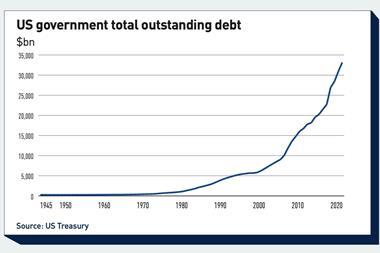Equities outperform bonds long-term! Pension funds are for privileged investors as, because of their long-term liablility profiles, they do not need to care about the short-term volatility of equities. This means that pension funds can hold the highest exposure in equities that the individual liability profile of the fund justifies.
This is the text book theory. As always the reality is different.
After three years of equity bear markets many pension funds cannot afford high equity exposures. The risk budgets became small. Many pension funds that conducted asset liability studies realised that their existing portfolio allocation will probably not yield the returns required to meet liabilities. The current approach to institutional investment management is characterised by a structure of mandates for asset classes each linked to index or peer group benchmarks. A significant part of the risk relative to the fund’s liabilities is not managed through the mandates themselves. Asses allocations need to be clearly and coherently integrated with risk management against the fund‘s liabilities. More than ever before pension funds demand assets generating strong cash flows with stable capital values.
An interesting investment opportunity that trustees should have an eye on is investment in a diversified portfolio of infrastructure projects. Investments in infrastructure, or public private partnerships (PPP), though not new, are still an unknown quantity. This is expected to change in coming years: investments in operational PPP projects can offer investors the opportunity to earn an attractive running cash yield at a material premium to Government bonds, with the benefit of stable capital values derived from long-term, fixed price contracts from Government departments or agencies.
‘Public private partnership’ means cooperation between the public and the private sector through sustainable private investment as a tool for improving public infrastructure, based on the logic that both the public and private sector have complementary strengths in the delivery of public services. In practice, if a government decides to use the PPP procurement model, it will advertise the project and invite tenders from the private sector. Typical projects are schools, hospitals, roads or goverment accomodation. Consortia of private sector organisations bid for the project with each consortium typically consisting of a building contractor (who will build the facility), a facilities management provider (who will provide the services required to operate the facility) and a financial investor. The consortium offering the overall best value for money is awarded the contract and forms a concession company that contracts with the relevant government authority to provide the services over the term of the concession.
The concession company finances the development of the project by combination of borrowings and equity which is repaid from project revenue. Project revenues are earned through the government paying a performance related fee to the concession company. This fee is paid over the life of the concession, generally 20-35 years, and is typically index-linked, thereby providing the investor with a high degree of protection against inflation.
There are three principal stages in putting a project out for tender:
o Bidding for the concession contract to construct or refurbish, manage and operate the asset
o Construction or refurbishment of the asset during which limited or no revenues are paid until the asset is completed and ready to use
o The operational phase where the concession company operates and maintains the asset using outsourced specialist service providers, where the government, or a government-backed entity, pays the contracted index-linked fees.
Once the concession companies have completed their higher risk bidding and construction phases, they benefit from long-term contracted revenues from high credit-quality counterparties and predictable operating arrangements, and this may be the most attractive time for pension funds to invest–given the risk/return/yield balance.
The pension fund acquiring holdings in operational concession companies will expect a gross IRR of between 10% and 13% under conservative assumptions. However, many projects offer opportunities to enhance materially these returns through operational, accounting, tax and financing efficiencies which may increase the expected IRRs of the portfolio to 15 -18%. Operational concession companies deliver average running cash yields of approximately 10-12% per annum.
Given the increasing demand by pension funds for strong cashflows, it is worth highlighting that given the strong yield and low volatility of capital values, the characteristics of these investments compare favourably to other asset classes. PPP is an alternative asset that offers a different risk-return profile, reacts differently to economic developments and provides the benefits of higher yields and more stable returns. PPP returns are not expected to show any significant correlation to those of the quoted equity, bond or property markets.
In short, they are ideal for investors who are keen to diversify their portfolio.
The largest and most developed market is in the UK. Over £35bn of infrastructure assets have been financed in the UK alone, in over 560 different transactions. Approximately 80% of transactions are beyond their development stage and are generating high running yields for investors. The UK Treasury forecast £5bn of ongoing additional PPP expenditure which is about 20% of all infrastructure investments in the UK.
The National Audit Office calculates as an independent entity the economics of all PPP projects. The private projects were 10-25% more efficiently established compared to public realisation. Activity in continental European countries is growing too, and can expect to represent a significant new market for investments over the next five-10 years. Continued growth of the market can be expected to increase investor interest. Greater volumes and investor activity may lead to lower risk premium being attached to the asset class and hence higher valuations.
Successful PPP projects are arguably a win-win situation for every party involved. The local county council getting a new school at lower price; parents receiving a modern school for their children; the private companies which plan, realise and operate the project; and finally the investors who get an attractive investment.
Patrik Röder is managing director, Henderson Global Investors in Frankfurt












No comments yet